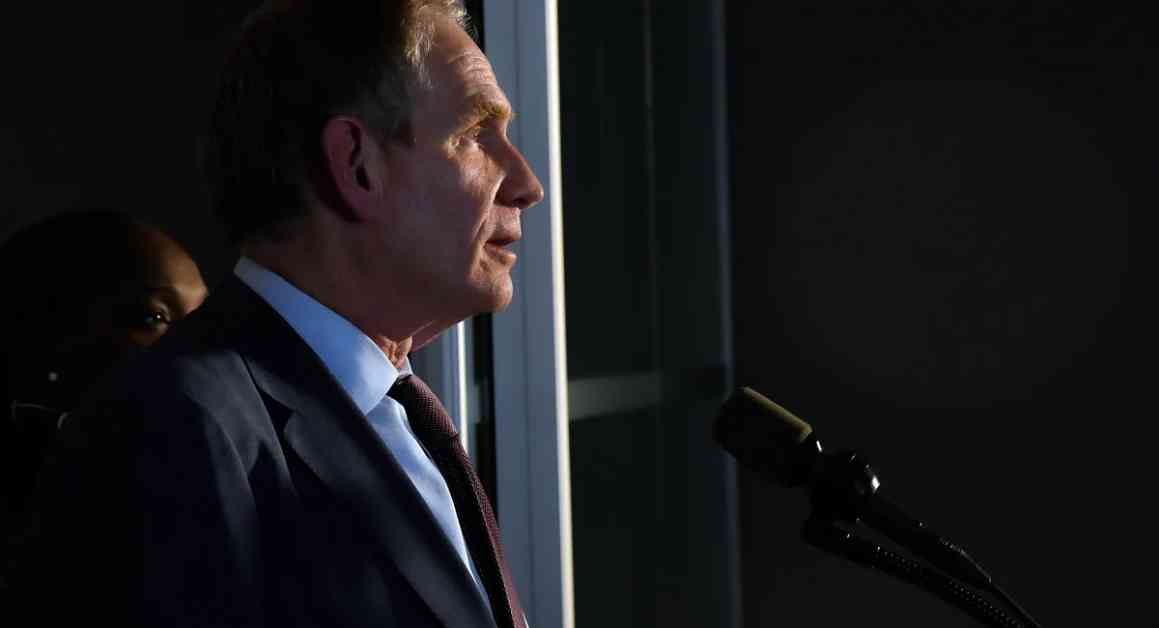MTA’s Janno Lieber Calls on Albany to Prioritize Transit Funding
In a bold move that captured the attention of state lawmakers, MTA Chair Janno Lieber delivered a passionate plea on Thursday, urging Albany to fully support the agency’s ambitious $65 billion construction plan. The call to action came during a state budget hearing in Albany, where Lieber vividly illustrated the consequences of underfunding public transportation by invoking the infamous “Summer of Hell” in 2017.
As he addressed lawmakers, Lieber painted a stark picture of the chaos that ensued when subway service ground to a halt due to failing infrastructure, leaving commuters stranded and frustrated. In a symbolic gesture, he brandished framed New York Post and Daily News covers from that tumultuous period, underscoring the urgent need for investment in the city’s transit system.
Reflecting on the challenges faced by the MTA, Lieber emphasized the critical nature of the construction plan, which includes vital upgrades to the subway’s aging infrastructure, such as electrical systems, train yards, and other essential components that are long overdue for maintenance. With a touch of exasperation, he lamented the recurring cycle of seeking funding from state lawmakers, highlighting the disparity in treatment compared to other essential services.
“It is a little bit of a mystery to me that every time the MTA capital program comes up, we treat it like ‘Oh my God, they need a bailout.’ This is no different than Medicaid and education and everything else that’s done in the state,” Lieber asserted, expressing frustration at the scrutiny and skepticism surrounding the agency’s financial needs.
Challenges of Funding the MTA Capital Plan
Despite the pressing need for financial support, Lieber faced a lack of concrete proposals from lawmakers on how to bridge the substantial funding gap in the MTA’s construction plan. While exploring alternative avenues to secure funding without resorting to tax hikes, Lieber acknowledged the ultimate authority of the Legislature in determining the fate of the agency’s budget.
In a delicate dance of political maneuvering, both sides grappled with the urgency of finding a viable solution before time ran out. With tensions running high, Rachael Fauss, an analyst with the good government group Reinvent Albany, warned of the risks inherent in the political standoff between the governor and the legislature over proposing new taxes and fees to support the MTA’s construction plan.
Amidst the heated discussions, Assemblymember Christopher Eachus raised concerns about the disproportionate burden placed on certain districts, like Rockland and Orange counties, due to payroll taxes funding the MTA. Expressing frustration at the perceived inequities of the current funding model, Eachus questioned the rationale behind imposing financial strains on his constituents without commensurate benefits.
Lieber sought to assuage these concerns by highlighting the broader impact of MTA improvements on Rockland residents, noting that a significant portion of the population relies on public transit for their daily commutes. By emphasizing the community-wide benefits of the construction plan, Lieber aimed to garner support for the much-needed upgrades that would enhance accessibility and efficiency across the transit system.
Vision for the Future: Enhancing Transit Infrastructure
Looking ahead, Lieber outlined the key priorities of the $65 billion capital plan, emphasizing the critical nature of “state of good repair” initiatives aimed at modernizing essential components of the subway network. From upgrading signals and pump rooms to installing elevators and ramps for increased accessibility, the construction plan aims to revitalize the aging infrastructure and ensure a more reliable, efficient transit experience for all New Yorkers.
As the MTA navigates the complex landscape of securing funding and navigating political dynamics, Lieber’s impassioned plea serves as a poignant reminder of the interconnectedness between public transportation and the daily lives of millions of city residents. With the fate of the construction plan hanging in the balance, the challenge remains to bridge the divide between financial constraints and the pressing need for transformative investments in New York’s transit future.












